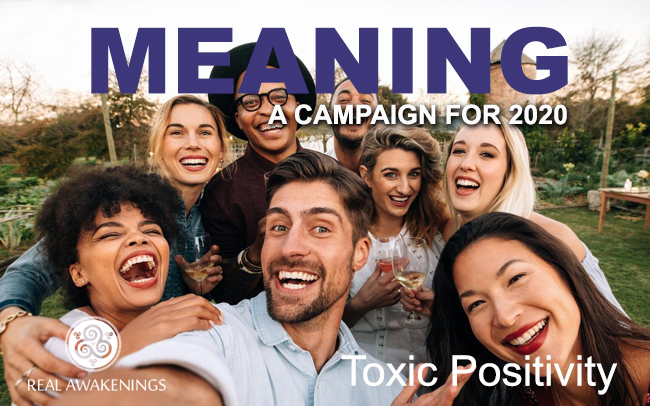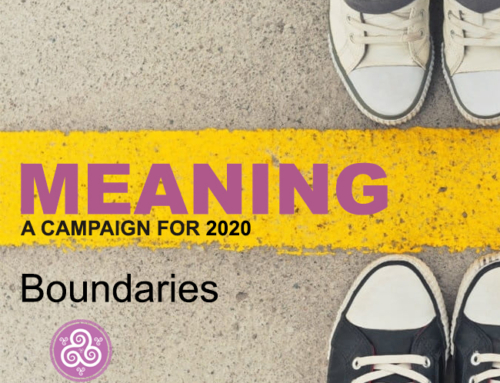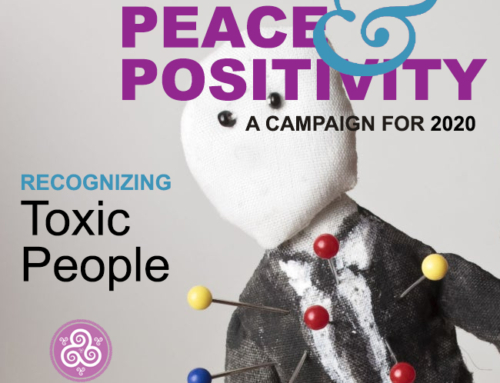Toxic Positivity
The Shadow Behind the Smiles
You want to be around others who are upbeat, fun, and who give off good vibes, right? Naturally. Is there real value in maintaining a positive attitude, and having a healthy outlook towards life? Absolutely. But, consider the following scenario… You’re with a group of friends, and having a really good time. The mood is high, with everyone laughing and telling stories. So far so good. But everything changes the second someone tells a tale of woe, or merely interjects a negative comment. The energy changes, and the mood shifts, as if somebody just let the air out of a balloon. To the group, that person seemly just ruined everyone’s good time in favor of their own needs. How dare they not follow the socially acceptable predetermined script of nonstop social positivity! The knee jerk reaction towards the mood buster is to either be made fun of, rejected, put down or shunned. Was the negativity emanating from that person just attention-seeking? Are they intentionally sabotaging a good time? Or, are they truly in a rough spot, and in need of help? Bottom line—they don’t fit the mold in favor of the group dynamic and agenda of total and complete positivity, genuine or otherwise. On the other hand, let’s take a look at these so-called “happy people.” If a group’s unequivocal unspoken need for positivity is so extreme, or is an exclusive-only reality, it should be the warning sign of phoniness, and something else is happening below the surface. Having to stick to the script of total positivity is disingenuous. It could actually be a form of denial, an escape, or cover-up from not wanting to deal with the pain and hostility lurking below all the fake smiles, hugging and “I love you’s.” This is Carl Jung’s shadow in full force, and is what I call “toxic positivity.” This type of shadow rears its ugly head in the biggest way on social media. It also explains both adolescent and adult bullying, cult behavior, and unfortunately, the abuse occurring in some spiritual circles. People can easily be exploited, taken advantage of or used in some way by the wrong group of people stemming from their need to belong. The superficial persona from the smallest group of friends, all the way up to large organizations, can be a veritable mine field of danger when you start looking under the rug.
Acknowledging the shadow doesn’t imply that anyone run in the opposite direction, and become lethargic, dull, depressed, pessimistic or nihilistic. But rather, take the middle path of wisdom and discernment to look beneath the superficial façade of a group, circle of friends, or group leader to see if you are in alignment with their true agenda and values. Moreover, it’s simply not normal to be up, and happy with a huge smile permanently fixed upon one’s face 24 hours a day. John Bradshaw’s term “joy addict” comes to mind. Observed from the outside, it’s all smiles and giggles until some ill-defined rule is broken, and somehow the group dynamic gets disturbed. Then you’re ousted, and stabbed in the back with a smeared reputation. Finally, you realize that all those smiles and laughter were a manipulative smokescreen modulating underlying painful and neglected emotions, sitting in wait for an opportunity to be expressed. At the end of the day, all the toxicity will be your fault too.
In some of these toxic circles, you’ll notice the repetition of trite socially acceptable mantras where people convince themselves, and others, that they’re happy with their lives, and have everything all sorted out until that is, you break the ultimate rule, and merely hint at calling them out. The joy addict’s persona is governed by a rigid set of rules and behavior providing no space for being real or authentic. When you’re around a joy addict, or worse yet, a whole group of them, you can actually feel the pressure to tell the funniest jokes or stories you know, employing an exaggerated laugh at their jokes and stories, so you can fit in and belong. The need to belong is strong enough where people feel competitive so that everything they say is clever and entertaining enough to gain the group’s approval. The rules of social interaction are always the same; you must always be laughing, smiling, happy, and full of wit and optimism at all times—or else. Don’t point out anything that may be considered negative without risking some form of rejection. This is notoriously prevalent in the business world. The next time you’re in this situation, try an experiment, and step back, and just observe. You’ll begin to see that beneath all the laughing and love bombing, the shadow of hostile, unresolved emotions always comes out sideways. It has to go somewhere, and is usually in the form of passive aggressive sarcastic quips invariably disguised as humor. These are the jokes made about other people, all in the spirit of good fun, but really are at the other person’s expense. Your observation will detect a field of opposites at play. You’ll see and feel a high degree of superficiality that’s only masking an underlying truth of unresolved negativity, hurt and pain. This phenomenon is observed on a daily basis through the abundance of people’s short fuses and low boiling points. External pressure of any kind, be it politics, financial, illness, domestic or political will push people to their max.
Being positive is a great. Being optimistic is great too. We have to shift the tides of negativity and division somehow. But the point here is to be on the alert for something insincere where you may encounter yet another trauma you don’t need. People have been burned enough. Be smart and know that some people are not always what they appear to be on the surface. You would think social media would provide a technological forum for genuine connection, but alas it’s proven to be one of the most toxic spaces on earth, riddled with hostility, unhappiness, and an insatiable need for constant adoration and likes. Ultimately, the shadow side of positivity has produced an absurd culture of people driven to manufacture an artificial online avatar of themselves to present to the world. It’s the ultimate form of denial, complete with extra wide smiles, airbrushed faces, pouty lips, and tilted hips, all manufactured within a well-lit and properly staged background. Striving to be even more extreme, more positive, and more perfect. It’s become a landscape of lunacy and competitiveness on steroids, driving people further away from any semblance of true human connection. People waste their time competing with fantasies and mirages generated by smoke and mirrors. What emerges over time, and we’re seeing this come to fruition now, is a confused delusional society littered with an abundance of lost souls who don’t know who they really are. Is it any wonder why anxiety and depressive disorders are at an all-time high? Life is so full of richness and joy, but comes as a complete package that also includes challenges, struggles and pain. People have enough to deal with in life without the added pressure to live up to some external artificial expectation invented in a fantasy where nobody knows what it’s like to be real. Seems like people can’t even have a bad day. I think it’s time for a giant reset where people get grounded back in reality. It’s the only space where true healing and actual positive change can take place.
Feel free to leave comments or questions below.
Sept 18 Addendum: A video by Dr. Ramani was posted on YouTube on Sept 15 discussing this exact topic. It made my heart sing to see someone else make precisely the same observations—to a tee. However, I believe toxic positivity is more of a broad based phenomenon of group dynamics, and not limited to narcissism, per se. But, Dr. Ramani truly nails it. You may want to check out her video at: https://youtu.be/l19QSxWyaWI. Feb 1 Addendum: I came across another video that captures the topic as well. This guy does a great job and he also mentions some thought I’ve expressed on other articles: https://www.youtube.com/watch?v=dmLTLkCBSN8.


